The teaching principles she used as a lifelong educator and coach have helped Kathleen Markey become an effective trainer for dogs - and their owners.
- by Ellis Anderson
“You use many of the same methods for teaching children as you do dogs,” says Markey. “In both cases, you first need to get their focus. And you reinforce positive behavior, whether it’s been asked for or not.”
She points out that impulse control training also is important to teach to young canines and humans. But there’s a major difference between the two as well: dogs communicate mostly through body language. Markey explains that dogs watch their owners carefully and in most cases, “know the owners better than the owners know themselves.” But that’s not a two-way street. People often don’t notice or they misinterpret their dog’s body language. “They’re talking to us all the time, but we don’t know what they’re saying.” For example, if you’re hugging a dog and it rolls its eyes back so that the whites are visible, that’s known as “whale eyes.” It’s a sign of anxiety, not ecstasy. “I sometimes see a dog being forced to greet another dog or kid and it’s showing whale eyes and ears back – clear signs of stress,” Markey says. “The dog is very scared. The owner should pay attention to that.” Reading a dog’s body language is one of the primary things Markey teaches in group classes and while working with individual dog owners. In short sessions, she can evaluate the behaviors causing issues and begin to work with the owner on retraining the dog.
Markey says that some behaviors can be addressed much better on the dog’s home turf.
“If your dog won’t stop barking when the doorbell rings, or if it’s counter surfing, I can’t train it in my yard. And we can cover a lot of ground in 35 or 45 minutes.” The retired educator especially likes teaching children about dogs, individually and in groups. Teaching them the basics in dog behavior and care can cut back on the chances of being bitten and help make them lifelong animal advocates. The workshops and kids’ camps also stress the responsibility owners have for their pets. In fact, Markey has written an illustrated children’s book about relating to and caring for dogs. Titled “Whoodies Dos and Don’ts of Child Safety,” it’s told from the perspective of Markey’s celebrity dog, Who Dat. Who Dat came into Markey’s life in 2010, after the BP oil spill had left thousands of dogs unable to be cared for by their owners. Many were abandoned. Other’s were surrendered. Like a small Maltipoo. By that time, Markey had been working with Animal Rescue New Orleans (ARNO) for five years – she’d started volunteering immediately after Hurricane Katrina. The program’s director, Charlotte Bass, had encouraged her to pursue certification in dog training. As a trainer, Markey was able to reduce the rate of adoption return, simply by helping families and their new dogs learn to cohabitate peacefully. In 2010, Markey, who had grown up with dogs in Chicago and later always had a dog companion who’d travel with her while recruiting for college basketball teams, was in deep mourning for a long-time dog who’d passed away. She was so distraught, she began working in the cat room at the shelter, unable to be around dogs that reminded her of the loss. Charlotte found Markey in the cat room one day and proclaimed, “I’ve got your dog!” Markey protested that she didn’t want another dog. Charlotte ignored her and brought in “a little bit of white fluff.” Markey protested again. She’d always been a big dog person. Charlotte persuaded her to take the dog home for the weekend. “If this is a yappy dog, I’m not taking it,” said Markey. The two-year-old bit of fluff and Markey have been inseparable for the past seven years.
The dog promptly dubbed Who Dat – “Whoodie” for short – and became part of the Saints fan costume act that Markey and a friend had started a few years before. The two teachers had used a bonus to buy Saints season’s tickets in the nosebleed section. As a gag, the two costumed as nuns from the fictional “Order of the Long-suffering Fleur de Lis.” Markey’s friend was Sister Who, while she became Sister Dat. The pair quickly became crowd favorites at every home game. Whoodie joined the act and had his own adoring fans on game day.
“There may have been a time or two when he actually watched games inside the Superdome,” says Markey, smiling. In 2017, Markey made the move to Bay St. Louis. She’d been visiting a retired teacher friend who’d relocated and enjoyed the natural beauty and slower pace. As her retirement as an educator approached, she wanted to expand her part-time pet-sitting/dog-training service into a full-time business. BADS was born Markey and Whoodie, can be often seen walking their guest dogs or riding on a scooter through the streets of town. The trainer’s volunteering with Friends of the Animal Shelter and she offers programs to help raise awareness about dog-human relationships. Markey says that the most rewarding thing about working with and owning dogs is their unconditional love. She tells a story about a recent beach walk with a gigantic Great Pyranese, Buddy, who’s a regular in her daycare. The pair came on a distraught woman sitting alone on the beach. When they stopped to chat, the woman confessed she was upset after being affected by the government shut-down. “Before you know it, Buddy put his head in her lap,” says Markey. “He made her forget her troubles for a minute and smile. “It’s what dogs do.”
Design diva Holly Lemoine-Raymond walks you through a form of art known as “triptych Art” derived from the Greek word “Triptukhon” which translates to “three-fold." That also translates to three times the fun, with Holly!
Let’s get started.
Step 1: Select the picture of your choice. I found this one at Hobby Lobby but you can use photos that you’ve taken. Bridges and city skylines are great to use for this project
Step 2:
Take the photo frames apart. You will only need the paper or card board backing to trace the area you want to cut out of the photo. I used a picture that was 3 feet long and 1 ½ feet tall to put in 8x10 frames.
Step 3:
Place the paper from the picture frame over the place on the picture where you want to cut. You will not be framing the entirety of the chosen print. You will be cutting out enough of the print’s vital areas to create the illusion of the complete picture once you are finished.
Step 4:
Once your sections have been outlined, it’s time to cut them out! Don’t be nervous. Just follow the outline you made on the print.
Step 5:
By now you have 3 separate sections ready for framing. Frame them up!
Step 6:
Hang them on the wall of your choice to create a beautiful piece of Triptych Art and enjoy!
I made this one of an old motorcycle on sepia print for this DIY project. My son liked it so much we have hung it in his room. I hope you enjoyed this edition of Beautiful Things and we’ll see you again in March!
Prepare to flaunt both of your inner divas — Country AND Western! — during a themed Second Saturday Artwalk in Old Town Bay St. Louis on January 13. “Dolly Should. The monthly art event takes on a Nashville spin by celebrating Dolly Parton's birthday with an art show, hayride, square dancing and an astonishing costume contest!
- stories by Denise Jacobs, photography by Ellis Anderson
Here's a full schedule of "Dolly Should" activities in Old Town on January 13
Carroll House B&B
304 Carroll Ave. Bay St. Louis 866.300.2704 Carroll House will be hosting an open house on Second Saturday, from 4pm - 6pm. Refreshments will be served.
For Jane Kulpeksa (formerly Alford), owning a bed & breakfast was a long-held dream. When the big house on Carroll Avenue, an historic seaside home in the heart of Old Town, became available after Katrina, Jane, who lived around the corner on Toulme at the time, bought the house. She also bought a camper trailer, which she lived in while making renovations on the Carroll House. It was a bed & breakfast in the making.
About a year and a half later, the house was livable, and Jane moved in. However, she continued making renovations, including the addition of two bathrooms. Then, in 2011, Carroll House Bed & Breakfast opened its doors. Jane notes that the house was one of only a few accommodations open in Old Town at the time, so she developed a loyal customer base from the beginning. The house is a short stroll to the center of Old Town and the beach. In addition to overnight or long-term stays, Carroll House is an elegant setting for an intimate wedding and/or baby and wedding showers. Be sure to check out the Carroll House online for a gallery of photos. Guests can enjoy an early morning cup of coffee on the private porch as the birds serenade them, or join other guests in the parlor for friendly conversation. Most often, guests gather to eat breakfast together, a traditional bed & breakfast element that Jane holds dear. Sometimes guests even congregate in the kitchen to chat as breakfast is prepared. It’s that kind of place.
Jane cooks with the vegetables she grows in her garden, and she serves and sells lemon, satsuma, and kumquat marmalades made from the fruit trees grown around the house. “It’s a beautiful home with a comfortable atmosphere,” Kulpeksa explains, and “people tell us that they feel at home here.”
Originally from Louisiana, Jane has lived in Bay St. Louis for 21 years. She attributes the success of Carroll House to her capable, loyal, and trustworthy staff—a bit of a challenge to find in the early years but entrenched now—and to her involvement with the Hancock County Chamber of Commerce. According to Jane, repeat customers turned friends have made her bed & breakfast a dream-come-true. In fact, Jane is gratified to report that many of her previous guests are now permanent residents of the Bay. “They come here and fall in love with the area,” she says. “I like to think we here at Carroll House had something to do with that.”
Hancock County Historical Society
108 Cue Street Bay St. Louis 228.467.4090 Bring one-page bio sketches (see below) with you to the Second Saturday Open House between 4:00 p.m. and 8:00 p.m. Your name will be entered in a drawing for a copy of Bay St. Louis: Celebrating The First 300 Years. In addition, your bio sketch will be featured in one of the monthly newsletters.
For Charles Harry Gray, it was love at first sight.
The year was 1984. The event was the Sir Thomas Lipton Challenge. Gray, now director of the Hancock County Historical Society, had driven in his Rolls Royce from New Orleans to the Bay to observe the annual sailing event. Within a week, he had purchased his first home in his new hometown. Not long afterward, Gray attended a meeting of the Hancock County Historical Society, became a member, and was made vice president the very day he joined. This was before the Lobrano House was bestowed to the Historical Society, a time when members held their meetings at local restaurants. Gray knew all about restaurants. He had operated Corinne Dunbar’s restaurant in the grand parlor of her home on St. Charles Avenue. At Corinne Dunbar’s, customers were treated as if they were dinner guests at a party in her home. I suspect that those who visit the Hancock County Historical Society experience a similar sense of welcome.
The society is headquartered in the Kate Lobrano House, described on the Historical Society’s website, as “a delightful 1896 shotgun cottage that was donated to the society in 1988 by the grandchildren of Katherine Maynard Lobrano.”
The original house at 108 Cue Street is used as a turn-of-the-century museum while an addition to the rear of the house provides office and storage space. Depending on the day of week, guests will find either Gray or Eddie Coleman, newsletter editor and staff person, running the operation along with one of the society’s officers or a community volunteer. Membership in the Hancock County Historical Society is 1,000 strong, and membership is nationwide. In fact, Gray marvels that a contingent of out-of-state members commit to months of volunteer service onsite while vacationing in the Bay area. In the pre-Katrina years, visitors traveled to Hancock County regularly via tour bus, often to visit the 728 Bay St. Louis houses on the National Registry. The Hancock County Historical Society functions in many ways as a guest or travel center for those who want to know what to see and do while in the area. At its heart, however, the Historical Society collects, preserves, and maintains a collection of documents, photographs, memorabilia, and artifacts designed to help future generations understand their heritage. As a private institution with no state funding, the Hancock Historical Society relies entirely on charitable contributions and memberships and is only as strong as its community involvement. To that end, the Historical Society has a standing invitation to anyone who has lived in Hancock County to share their family histories. If you bring in photographs, volunteers will copy and file them in color-coded binders labeled Waveland, County, People, Tony Scafidi, Hurricanes, Cemeteries, Registered Trees, Bay St. Louis Houses, and so on. The photos will also be scanned and saved online.
As any survivor of a natural disaster can tell you, few things are as important as preserving personal artifacts, memorabilia, and stories. With that in mind, the Hancock County Historical Society invites those whose loved ones have lived in Hancock County to complete a one-page bio sketch of a deceased loved one or family member with roots in Hancock County.
It would be appreciated if you would follow the suggested template. Label and attach a photograph, and include your contact information. All original photographs will be returned to you. A word to the wise: Don’t let the “Story/Anecdote” section intimidate you. Your story might be a paragraph long and focus on a family holiday, a childhood memory, a rite of passage, a military experience, an encounter with nature, a sports triumph, a religious awakening, or a professional accolade.
Suggested Bio Sketch format
The butter-colored house in the Chapel Hill neighborhood is sunny through and through with the warm and welcoming energy of owner Vicki Hughes.
- story and photos by Ellis Anderson
After twenty-one years heading up nursing homes in New Orleans, Vicki made a lateral move into hospice work. While she already held degrees in both Management and Marketing, she entered a Master’s program in Health Care Administration at Tulane University.
For four years, she juggled both work and school. There weren’t many beach days. But the dream of a coast home helped sustain her. It was a mirage she could see up the road, encouraging her onward.
In 2003, Vicki became part owner and vice president of Hospice Care of Louisiana and Mississippi. Even though she was traveling around the country almost weekly on business, she was determined to at least start establishing a Bay St. Louis home.
After shopping carefully, she purchased a lot in the Chapel Hill development on Highway 90 and Beach Boulevard, right at the foot of the Bay bridge. The neighborhood’s central location made it easy to hit the road to New Orleans or points east, while the commercial district of Old Town was an easy walk away.
There were other pluses. Chapel Hill’s flavor reminded Vicki of one of her favorite beach towns, Seaside, Florida. Rigid architectural standards – similar to those in an official historic district, but much more stringent – protected the value of her property. The small lots made upkeep easy, especially important to someone who traveled a lot.
At the time, the development offered four or five approved house designs to choose from, but none suited Vicki’s fancy. Since her father and cousin both worked in the contracting business (Vicki’s father was the head of Shreveport’s building department for many years), she turned to them for suggestions. Vicki’s cousin referred her to an architect he’d worked with before, Benny Montgomery. Montgomery took note of Vicki’s wish list: a wheelchair-accessible bed and bath on the first level so her parents would be comfortable staying, no matter their age. An outdoor living space with a view for both upstairs bedroom suites.
And an entertainment area. Louisiana style. Living, dining and kitchen areas were to be open, yet delineated from each other to provide lots of conversation pockets. The kitchen was not to be large, but cunningly designed to save steps for cooks, while giving them plenty of elbow-room. Windows and doors would make up most of the living area’s back wall, so the rooms would meld with the tropical gardens outside.
The architect’s job was an especially challenging one because the lot was small and pie-shaped. And the setback in the front was 20 feet, according to the no-wiggle-room Chapel Hill covenants. Montgomery used angled walls and roofs, eventually coming up with a plan that fulfilled Vicki’s checklist and gave her nearly 2,500 square feet of heated and cooled space.
Construction on the house began in 2003 and it took a year to complete. Vicki pulled on her marketing background to “brand” the house with little touches along the way. Balcony railings have an “H” worked into them. The entryway sports a subtle “V” design etched into the floor, greeting visitors coming and going. Interior walls sing with color – there are eight different shades in the house, all of them chosen from a tropical palette. No white ceilings here - instead, she used a shade of paint 20% lighter than the wall color.
Furnishing the house, Vicki kept the comfort of her family and friends in mind. Books and games tempt guests to put aside the cellphone. Furniture doesn’t vie for attention with the people in the room: it’s there to serve instead of scream. Artwork and décor ranges from whimsical to tranquil, often bringing a smile.
“I guess you’d call the style eclectic,” Vicki says. “A little bit of this, a little bit of that. I just get what I like for the house.” She gestures around the living room and grins. “And as you can see, I like a lot.”
The guests at Chez Vicki began arriving almost immediately on the home’s completion. Most weekends, as soon as Vicki unpacked her traveling bags, she called some friends, opened the doors, cooked a meal and the party began.
Vicki quickly became established in the community, known as the“Pink Lady,” since she’d chosen the cheerful color to represent her hospice business. Her Maltese dog, Precious, became a local celebrity too. The small therapy dog went to work with Vicki, its coat dyed a soft shade of pink.
Fast forward to 2005. Eleven months after Vicki had moved in, Hurricane Katrina demolished much of the town. Many homes in the Chapel Hill development were destroyed, but Vicki’s still stood.
She arrived shortly after the storm to find that while beds upstairs were still made, the ground floor had been scoured by the storm’s unprecedented tidal surge. Furniture and belongings had been pulled out to sea or hurled through walls. “It never crossed by mind not to rebuild,” says Vicki. “I loved the area and hadn’t had a chance to really enjoy it yet. Leaving just wasn’t an option.”
Vicki’s dad came down from Shreveport and supervised the gutting of the ground floor, while friend/contractor Julie Rosson handled the rebuilding. The house was completed the second time in 2006.
“I’m real good at building this house,” quips Vicki, smiling. “I did it in 2004 and then again in 2006.” Since the home was one of the first in the area to be reconstructed, it became a refuge for other residents seeking respite. These were tough days for everyone, but Vicki recalls a lot of laughter. “Say what you want to about the storm, it was a great leveler. I got to meet people I never would have met. There was a lot of bonding and some wonderful times.” So when an in-ground pool came up for auction at a charity event a few years later in 2010, Vicki saw it as the icing on the cake for her “home entertainment center.” She placed a bid and won. “Of course, I had no place to put it at the time,” she says, laughing. “So I called up my friend who owned the lot next door to me and explained the fix I was in.” The friend sold her the lot. Vicki’s next call was to architect Bennie Montgomery.
“I told him the situation and sent my little sketches,” she says. “He understood that I didn’t want it to look like an add-on either, it should look like it’d been part of the original house.”
The new addition would be focused on the pool area. It’d have an outdoor kitchen, a fireplace, and of course, another entertainment area. The addition wouldn’t add any interior rooms, but would include a two-car garage. An outdoor shower and bathroom – Vicki’s “favorite part” - would allow guests to rinse off sand from the beach before entering the house.
Montgomery listened and when he sent back plans just a few weeks later, Vicki declared it perfect. Completed in 2011, the indoor and outdoor rooms now mesh seamlessly. One could have a fulfilling vacation and never leave the premises.
Which is Vicki’s new plan. “I was traveling so much for work, I was never home anymore,” she said, after four years as a nationally recognized hospice consultant. The changing health care system, where “it’s just not all about the patient anymore,” also made her consider a career switch. In 2016, she earned her real estate license and is now an agent with Powermark Properties.
“I love helping people – it’s the reason I went into health care to begin with,” Vicki explains. “With real estate I can help people meet their goals, achieve their dreams. I think I can make a difference there too.”
She contributes in other ways as well. Her community involvement led to her being named one of Hancock County’s ten Outstanding Citizens in 2010. She has served on the board of Friends of the Animal Shelter and is an active part of the Hancock Women’s Leadership program that she created years ago. While Vicki still loves to travel, she’s enjoying being home now, savoring each day in her vacation house that’s not. “A friend once asked me why I’d ever want to leave this place. He said I lived in Paradise,” Vicki says. “And I agree completely.”
A light-hearted birthday tribute to one of America's most beloved musical artists has turned into a fun mid-winter tradition in Old Town Bay St. Louis.
- story by Ellis Anderson, photos by Ellis Anderson and Brenda Comer
But the main attraction of the evening (one that’s pulling people from as far away as Austin, according to organizers), is the Dolly Look-alike contest. Last year, more than fifty contestants – young and old, male and female - costumed as Dolly, then sang and sashayed before an enthusiastic crowd in an attempt to take the top prize.
Organizers are expecting even more contestants this year. Photographer Ann Madden and silversmith Sandy Maggio own Smith & Lens Gallery and are the creators of the annual birthday bash. “Getting people who attend to commit to even a little bit of country costume makes it a big party,” says Madden. “And folks who go all out just seem to come alive under that big hair. So it’s a fantastic, feel-good, family event.” Madden and Maggio came up with the idea of artist-themed birthday parties to spice up the Second Saturday Artwalks. They began with a “Frida Fest” in July 2014, to celebrate the birth of legendary Mexican artist Frida Kahlo. The premier fest surprised everyone with its instant popularity.
A few months later, the duo proposed a Dolly event in January, “the post-holiday, pre-Mardi Gras slump month” for local businesses. Other Old Town merchants and restaurateurs jumped aboard. The first Dolly Should was held in January 2015 to the delight of spectators, participants and local businesspeople.
The event is self-generated by the Old Town Merchants Association, without any assist from the city. Madden and Maggio say that it only works because most downtown businesses volunteer to participate. A restaurant might offer a country-themed special, while a shop might host a pie contest or hayride. Event publicity takes place mostly through social media. “This town is just incredible,” says Maggio. “Everybody pitches in.” Which is made easier since the event is wrapped around such an iconic musical artist. Both women point to Parton as an inspirational figure, beloved for her philanthropy, as well as her music. The star’s down-home simplicity is another reason for her appeal. “Who doesn’t love Dolly?” says Madden. “For nearly sixty years, she’s been making music without compromise. She’s unapologetically herself.”
As the word of Dolly Should has spread, visitors from out of town are booking trips to the Bay specifically to “stay for a few days, dress up like Dolly and have fun.” Maggio also says she knows several contestants who have been working on their costumes since last year’s event.
“I’ll bet the wigs are already sold out on the coast,” says Maggio. Maggio’s big dream for this year’s celebration? “My number one wish is that Dolly would just show up with her entourage,” Maggio says. “I would just die.” “And of course, I want everyone to think of Bay St. Louis as a fun, happening little place,” she continues. “Because we are.” Participants in the Dolly Look-alike contest should register between 5 pm and 7 pm at Smith & Lens Gallery, 106 South Second St. The entry fee is $10, with prizes being original “works of art.” Check back here soon for a full roster of Dolly Should events/times/places.
Waveland Mayor Mike Smith sits in as columnist for Alderman Jeremy Burke this month, with a look back at 2017 and a look ahead into the coming year.
Also, 2018 will bring the long awaited and much needed parking bays along Beach Boulevard and pagodas along the pedestrian beach walking path.
The Nicholson Avenue overlay and bike path project is in the design/survey phase. This project will create a bike path alongside Nicholson Avenue from Highway 90 to the CSX railroad.
The Waveland Avenue Sidewalk project which will go for bid in early spring consists of five-foot sidewalks on the East and West sides of Waveland Avenue from the CSX railroad to Highway 90. This project was approved for funding in 2015.
The sidewalk project is funded through the Mississippi Department of Transportation, and several departments of the agency have to approve each step. However, we are almost over that hurdle. A city-wide sewer repair project will begin as soon as the few remaining right-of-entries are signed. Please be patient in the areas that are to be replaced. The areas that will be most affected with the construction will be Meadow Lane, Herlihy Street and a portion of Gladstone.
At the very end of December a lease was awarded to Studio Inferno to take over the vacant spaces of the Business Center. I’m really excited to have this arts center open on Coleman Avenue. We believe that it will promote growth in the downtown area of Waveland. These artists are wonderful people and bring a unique type of art culture to our charming little city.
A small bathroom facility will soon be constructed at Elwood Bourgeois Park, thanks to the revenue received from the sale of the city's remaining mobile homes that were previously used as the Police Station and Public Works.
Edward H. Wikoff Architects PC have completed the overview of the Coleman Avenue plan, which consists of an elevated boardwalk containing businesses on the boardwalk to overcome the challenges with the drastic flood elevations imposed by FEMA. Once the architectural drawings are complete, Waveland will have those for review, and hopefully find support from the community and a funding source for this project. In closing, I hope you and your family had a great Christmas and a Happy New Year! -Mayor Mike Smith
A trio of artistic leaders and businesspeople have ambitious plans to grow The Arts, Hancock County to enhance creativity, local culture - and the economy.
- story and photos by Ellis Anderson
One of Barney’s more recent community projects, the Magnolia Bayou STEM art project, worked with the local Boys & Girls Club to create a video and multi-media exhibit.
Madden is a designer and professional photographer, in addition to being co-founder of the Bay’s Smith & Lens Gallery, 106 S. Second Street, BSL. Madden and her business partner, Sandy Maggio, have garnered national attention for the Bay by creating two events celebrating the birthdays of women in the arts. Frida Fest, held in July, honors Mexican artist Frida Kahlo, while Dolly Should in January, focuses on singer-songwriter Dolly Parton. Both events have been poular area business boosters.
Barney says that plans are already underway for a raft of new and updated programs in 2018. He says that the long-range goal is to create partnerships with the Chamber, the Old Town Merchants Association, and local governments - collaborations that will promote economic development throughout the community.
For instance, a series of public art projects are already in the works with the Hancock County Board of Supervisors. Barney’s also working on plans to host a one-day “economic/arts summit,” to explore ways The Arts can coordinate efforts with other organizations to attract more visitors, residents and businesses over the long haul. Look for Arts Alive! – a popular multi-media event that takes place in March (March 24, 2018) – to get a face-lift this spring. Produced by The Arts in coordination with Old Town merchants, this year, the event will bring more fine art to the streets. The film festival segment, introduced last year will be expanded as well.
The juried exhibition for The Arts members will be moved to a higher visibility venue (TBA).
“We’re going to focus on more hands-on demonstration type things for the 2018 Arts Alive,” says Barney. “For instance, I’m also working with artist Vicki Niolet to do a big Steampunk build-out. In real time, we’ll actually be welding together a kinetic sculpture while people watch.” Also on the table is a tour of artist studios in the fall, and more arts workshops. “We’re having more classes offered here at the Bay Creative Arts Center all the time,” Barney says, citing everything from pottery classes to flower arranging workshops. “It’s part of a bigger initiative to bring snowbirds down here for the winter for artists in residence opportunities.” Barney points out that local B&Bs and vacation rentals will benefit by the endeavor, as well as local shops and restaurants. Membership benefits will be making a huge stride forward in 2018, according to Barney. The Arts is updating its website, integrating more social media and streamlining the members community – making it easier for artists to join and sign up for committees or events. “We have big social media initiatives planned, including Instagram “takeovers,” and artist of the month features,” Barney explains. “Donna Martin will oversee our gallery exhibitions, standardizing the system to manage gallery openings at the Waveland City Hall and other venues. Our educational outreach will also be expanding.” Barney says that the Magnolia Bayou project has already borne positive and long-lasting fruit: The Arts has teamed up with the Raw Oyster Marching Club to bring a weekly after-school arts program to the local Boys & Girls club.
To join The Arts, Hancock County, click here! You can even pay online.
Limited on time, but love a good read? Shoofly Magazine book reviewer Carole McKellar lists her favorite 2017 books - and gives "best of" lists from the New York Times, Publisher's Weekly and the Boston Globe.
— Lincoln in the Bardo by George Saunders was my favorite book this year. Saunders is famous for his stories, but his first novel won the Man Booker Prize. This novel takes place in the graveyard housing Abraham Lincoln’s beloved eleven year old son, Willie. Souls trapped in purgatory, called the bardo in Tibet, view Lincoln visiting his young son and find hope for their own salvation. Funny, dark, and totally original, this book will always have a place on my shelf of favorites.
— News of the World by Paulette Jiles describes the journey of a hardened veteran of multiple wars and a child captured and raised by a Kiowa tribe. The child remembers nothing of her life wearing dresses or speaking English. The love and trust that develops between them during their arduous trek across the lawless post-Civil War West brought tears to my eyes. — Anything is Possible by Elizabeth Strout is set in the small Illinois town that was the hometown of Lucy Barton, whom we first met in Strout’s previous book, My Name is Lucy Barton. Strout is one of my favorite writers, and this novel doesn’t disappoint.
— Moonglow by Michael Chabon is a fictionalized account of the life of Chabon’s grandfather, an adventurous scientist, engineer, and entrepreneur. The story unfolds as the old man relates his life story during the weeks prior to his death.
— Persuasion by Jane Austen was published 200 years ago in 1817. As with other Austen novels, there are worthy heroines who prevail over greed and vanity. None of Austen’s novels are quick reads, but they are certainly worth the effort. — Swing Time by Zadie Smith traces the friendship of two girls growing up in public housing in London from childhood into middle age. They meet in a dance class and bond over the movies of Fred Astaire and Ginger Rogers. Dance and music play a large role in this book.
— Upstream by Mary Oliver is a collection of essays that explores the reliance on nature in her creative process. Anyone who loves Oliver’s poems will enjoy these essays. In the first essay, Oliver writes, “Attention is the beginning of devotion.”
— Miss Jane by Brad Watson is a fictional account of an ancestor of Watson’s who grew up in rural Mississippi with a handicap that made an ordinary life impossible for her. Jane lived to an old age without bitterness or complaint. Her attitude in overcoming her handicaps was inspirational. — Everything I Never Told You by Celeste Ng starts with the death of a teenage girl. Lydia is the favorite child of Chinese parents who expect her to achieve what they were unable to. This book reads like a mystery while telling how loving families can completely misunderstand each other. — The Hidden Life of Trees by Peter Wohlleben and The Genius of Birds by Jennifer Ackerman will change how you look at the natural world. According to Wohlleben, trees in the forest are social beings who nurture each other and communicate danger through secretion of scent or sound vibrations. I risk boring my friends with information from The Genius of Birds, and force my husband, John, to listen while I read stories of navigation, nest building and feats of intelligence. These two books are remarkable.
The New York Times Best Books of 2017
Fiction
Publisher’s Weekly Top 10 Books
Fiction
Nonfiction
The Boston Globe’s Best Fiction of 2017
Borne by Jeff VanderMeer Blameless by Claudio Magris, translated from the Italian by Anne Milano Appel The Burning Girl by Claire Messud The City Always Wins by Omar Robert Hamilton Cockfosters by Helen Simpson The End of Eddy by Édouard Louis, translated from the French by Michael Lucey Exit West by Mohsin Hamid Fever Dream by Samanta Schweblin, translated from the Spanish by Megan McDowell Frontier by Can Xue, translated from the Chinese by Karen Gernant and Chen Zeping Go, Went, Gone by Jenny Erpenbeck, translated from the German by Susan Bernofsky Her Body and Other Parties by Carmen Maria Machado Home Fire by Kamila Shamsie House of Names by Colm Toibin Lincoln in the Bardo by George Saunders The Lonely Hearts Hotel by Heather O’Neill The Ministry of Utmost Happiness by Arundhati Roy My Cat Yugoslavia by Pajtim Statovci, translated from the Finnish by David Hackston Pachinko by Min Jin Lee The Power by Naomi Alderman Savage Theories by Pola Oloixarac, translated from the Spanish by Roy Kesey Sing, Unburied, Sing by Jesmyn Ward Things We Lost in the Fire by Mariana Enríquez, translated from the Spanish by Megan McDowell
2018 is shaping up to be another great reading year.
CASA's annual Mardi Gras Gala is one of the county's top social events of the year. But the real reason more than 500 people come together on this festive evening is to change the lives of foster children. Find out how.
- story by Ellis Anderson
To purchase advance tickets for individuals or tables, you can call the CASA office (228.344.0419) and pay over the phone, then pick up your tickets at the event. Or swing by the CASA office at 412 Hwy 90, BSL. 2018 CASA royalty: Queen Joy Richardson and King John ZImmerman 2018 CASA royalty: Queen Joy Richardson and King John ZImmerman
Tickets are $40 per person, with eight-top tables available for businesses, family and parties of friends for $600.
The New Orleans dance band, Got Groove, will be performing. They were recently named a Best Wedding band on "The Knot" website, so folks are sure to keep moving at the gala. Food is provided by Hancock County Tax Assessor, and famed community cook, Jimmie Ladner and crew. Smoked meats, pastas and desserts are Ladner’s specialties. Since it’s a “bring your own bottle” affair, mixers, cups and ice will be provided, while beer will be for sale. One highlight of the evening is the coronation of the 2018 King and Queen, always honorees who have served the community and CASA. This year’s King is John Zimmerman and the Queen is Joy Richardson. New this year – a special cup to honor the pair. The silent auction brings in a large share of the evening’s proceeds, with donated items ranging from vacations to certificates for local services to jewelry. According to current CASA board president, Natalie Guess, the most talked about auction item is a piece of land – a lot in Pass Christian’s Timber Ridge subdivision. “There’s also a cabin trip to Tennessee, a duck-hunting trip and a certificate for a Sandals resort vacation getaway,” says Guess. Guess says that all of the funds raised by the gala go toward recruiting and training CASA volunteers, who work with individual children in the foster care system.  Click on the image to open a PDF info sheet. Click on the image to open a PDF info sheet.
While the number of volunteers has risen from 50 a few years ago to 90 currently, there are more than 375 children in the Hancock County foster care program. About half of those don’t have a CASA volunteer watching over their best interests.
Guess explains that each of the children is appointed a state social worker when they go into the system. But the state workers are enormously over-burdened and each must handle 20 to 30 cases. CASA is a national organization with a program that has been proven as a powerful tool to break the cycle of child abuse and neglect. CASA volunteers are able to give individual attention to the children’s needs, far beyond what the state can offer. CASA volunteers are assigned a case – sometimes a single child, sometime a case involving siblings. They spend about eight to ten hours a month on each case – meeting with the children, the foster parents, teachers, day care workers and biological parents – anyone who has contact with the children. They also ensure that the children are having their basic needs met. “Sometimes, our volunteers are the only constants these children have in their lives,” says Guess. “The other people in their lives just don’t follow through.” Volunteers write up reports, explaining what they believe will be ultimately best for the child. Since the CASA volunteers (in most cases) have spent more time examining the situation than anyone else, in the vast majority of cases, judges go with the recommendations of the advocates.
Guess and her board would like every child to have an advocate because the CASA system works to place children in safe and permanent homes. Most of those with advocates make it out of the foster care system for good.
But that means at least an additional 90 trained volunteers are needed. Potential volunteers first meet with CASA staffers for an in-house interview, to get an overview of the day-to-day workings of a volunteer. CASA then sets up a full national background check. Then volunteers spend three hours a night twice a week in training until the 33-hour program is completed. Graduates are sworn in by a judge. Trained advocates can even pair up with a co-advocate to gain confidence or if they simply don’t have enough time to handle a case alone. “We have a CASA board member who knows first-hand what a difference an advocate can make,” says Guess. “She had a CASA advocate growing up. Now she’s a successful woman with a family of her own.” While children in the CASA program won’t be at the gala, of course, the centerpieces on each of the tables have been made with their help. “They hand-painted wooden masks that we’re using as the centerpieces,” Guess says. “We’re having them framed and matted and will auction them off that night. We only have 48, but it’ll be wonderful for donors to have something that these kids have created.”
Lindy Nelson & Tim Lewis
September 23, 2017
Photographer: Heather Rafferty of EJR Photography
Places Couple Registered: Zola Invitations: Minted Bay-Waveland accommodations for wedding party: Gulf View Properties Rehearsal Dinner: Trapani’s Eatery Hair by: Hair + Tonic Salon Makeup by: Mallory Fitzgerald Kroh
The Ceremony
Florals by: The French Potager
Wedding ceremony music: Eve Eisemann & Dalton Roan Wedding Officiated by: Donna Mellott Matrons of Honor: Holly Ladner & Sarah Rafal Bridesmaids: Eve Eiseman, Katharine Weathers, Corene Lewis, Heather Brow Groomsmen: George Paine, Xavier Mitchell, Sam Foster, Michael Nelson, Jonathan Brashears, Matt Dornback Jr Groomsman: Payton Nelson Flower girl: Ashlynn Garcia, Dayla Reynolds Ring bearer: Carter Nelson Bride wore: Lillian West Groom wore: Michael Kors Bride's Mother Wore: Adrianna Papell Groom's Mother Wore: Calvin Klein Time of day: 6:00pm Most Romantic Moment: Before we walked into the reception, Tim and I took a moment together in the garden.
The Reception
Wedding reception music: Jon Cleveland
The Reception Menu: Seafood Pasta and Jambalaya Cake by: Julie Ragusa Favorite toast: George Paine Best Dancer at the Reception: Carter Nelson The "wow factor" of your wedding/reception that everyone talked about: Martha Whitney’s floral design was incredible. The flowers really stole the show!
The most unique detail of your wedding/reception: We asked our yoga teacher and dear friend to officiate the ceremony. She really made the ceremony very personal and intimate.
Rentals: Arcade Theatre Honeymoon location: Mediterranean cruise to Spain, France, and Italy Bride's favorite part of the entire event: At one point, everyone on the dance floor sang along to "Don’t Want to Miss a Thing" by Aerosmith. It wasn’t planned at all. It was so joyful to look up and see all of our friends and family singing and swaying together. Groom's favorite part of the entire event: Having all of our friends and family in town. Gifts for Wedding Party: Groomsmen - Personalized cufflinks Bridesmaids - Personalized cosmetic bag and travel wallet Guest Favors - Wedding koozies
More than 400 Hancock County dogs and cats got a new chance to find quality homes in the North last year, thanks to a lot of determined volunteers and an ingenious transport program.
- story by LB Kovac

Volunteers at the 2017 Turkey Trot run, a Thanksgiving Day benefit for Friends of the Animal Shelter. LtoR: Left to right: Billy Rappold (transport driver/Friends interim President), Helene Johnson (Turkey Trot organizer), unnamed volunteer, Penne Rappold (Friends treasurer), and Denise Hines, holding dog.
Denise Hines is a volunteer with Friends of the Animal Shelter, a non-profit organization that supports the Hancock County animal shelter. The group focuses much energy on public awareness and raising money for free spay-neuter vouchers to reduce the number of throw-away pets.
Friends volunteer work ranges from spreading the word about adoptable pets on social media, to playing foster parent to new puppies, to simply playing a round of fetch with a bored dog. Hines also drives the van.
Friends of the Animal Shelter partners with Animal Rescue Front, Inc., or ARF, a Massachusetts-based organization that pairs full shelters in the South with emptier ones in the North. It helps overcrowded shelters like Hancock County's transport dogs and cats to shelters where there is a 100% adoption rate.
“We transport them into areas where there are almost no ‘disposable animals,’” says Hines. Once a month, she, as well as a few other dedicated volunteers with Friends, pack up a big blue Ford Transit van with adoptable dogs and cats for the first leg of a cross-country trip out of the South. Their first stop: Madison, Mississippi. “Rescue groups from across the region converge there,” says Hines. The animals ride in crates in the back of the van, with Hines and other drivers making frequent stops to clean the van, get humans and pets a snack and allow everyone a moment to stretch their legs. From there, Hines says, “[Animal Rescue Front, Inc.] drivers take them up North.” Some animals will go to shelters in Virginia or Massachusetts, but some might travel more than a thousand miles to shelters as far away as Maine. Friends coordinates similar trips with other transport groups too. It’s a long trip, but well worth it, both for volunteers and their furry passengers.
Below: Just a few of the Hancock Shelter dogs that were saved by transport to the North in 2017.
Potential adopters in most northeastern states have to jump through lots of hoops to adopt a puppy or kitten. There are home visits and lengthy applications to fill out. There’s often a requirement that every member of the family must pledge that they want the pet. Adoption fees are in the $400 range.
Even with these strict requirements for adoption, many of the dogs and cats that make this trip north are adopted before they even arrive at their destination shelters. Last year, Friends of the Animal Shelter was able to save more than 400 dogs and cats by transport. While transportation is a partial solution for the Hancock County shelter’s overcrowding problem, it still costs money. Each pet needs to have necessary shots, and tests for heartworms and infections, in addition to being conditioned for crates, transportation and family life. None of this is provided by the county or the state; it is all funded by private and corporate donations. “Thankfully, the community is supporting it,” says Hines. And that support (you can donate online now by clicking here!) is gladly welcomed because the other option, euthanasia, is unthinkable to the volunteers, who have seen too many worthy dogs meet their untimely ends. Many shelters, like Hancock County’s, resort to euthanasia at times because there simply aren’t the resources – food, money, volunteers, medication and space – needed to keep animals healthy until they are adopted. But both transporting pets out of state and euthanasia are merely stop-gap measures.
According to the ASPCA, Mississippi has no statewide laws that require the spaying or neutering of animals before licensing or adopting. Hines argues that such lax regulations create an excess supply of unwanted animals.
“In the North, many places require a renewable license for any pet; to obtain it, you have to be current and up-to-date on vaccines, and the pet must be spayed or neutered,” Hines says. “Puppy mills simply don’t exist in these states. To license a dog that’s not spayed or neutered, people have to meet official requirements to become certified dog breeders.” An NPR piece featured on “Morning Edition” points out empty shelters are now common throughout New England states and the whole of the Northeast, thanks to government programs: “spay and neuter programs, combined with strong participation by rescue groups, have greatly reduced the number of unwanted dogs” in these areas. Once sterilization became a normal part of the pet adoption and licensing process, there were fewer unwanted and abandoned animals in those states. Volunteers believe that if Mississippi were to adopt similar laws, the number of “unwanted” animals in the area would likely eventually fall to numbers that the local shelters could manage. The need for pet transportation groups and putting down sick or injured animals would become the exception, rather than the rule.
And stricter cruelty laws would not only dole out severe punishment to offenders, they would change the cultural norm of what's acceptable.
“If the government has respect for the animals and strict penalties for animal cruelty, that’s eventually reflected in the attitudes of the residents," says Hines. But until that happens, volunteers like Hines welcome the continued support of the community in getting these pets to the loving homes they deserve. Hitting the road, in this case, saves hundreds of lives each year. |
Categories
All
Archives
July 2024
|
Shoofly Magazine Partners
Our Shoofly Partners are local businesses and organizations who share our mission to enrich community life in Bay St. Louis, Waveland, Diamondhead and Pass Christian. These are limited in number to maximize visibility. Email us now to become a Shoofly Partner!











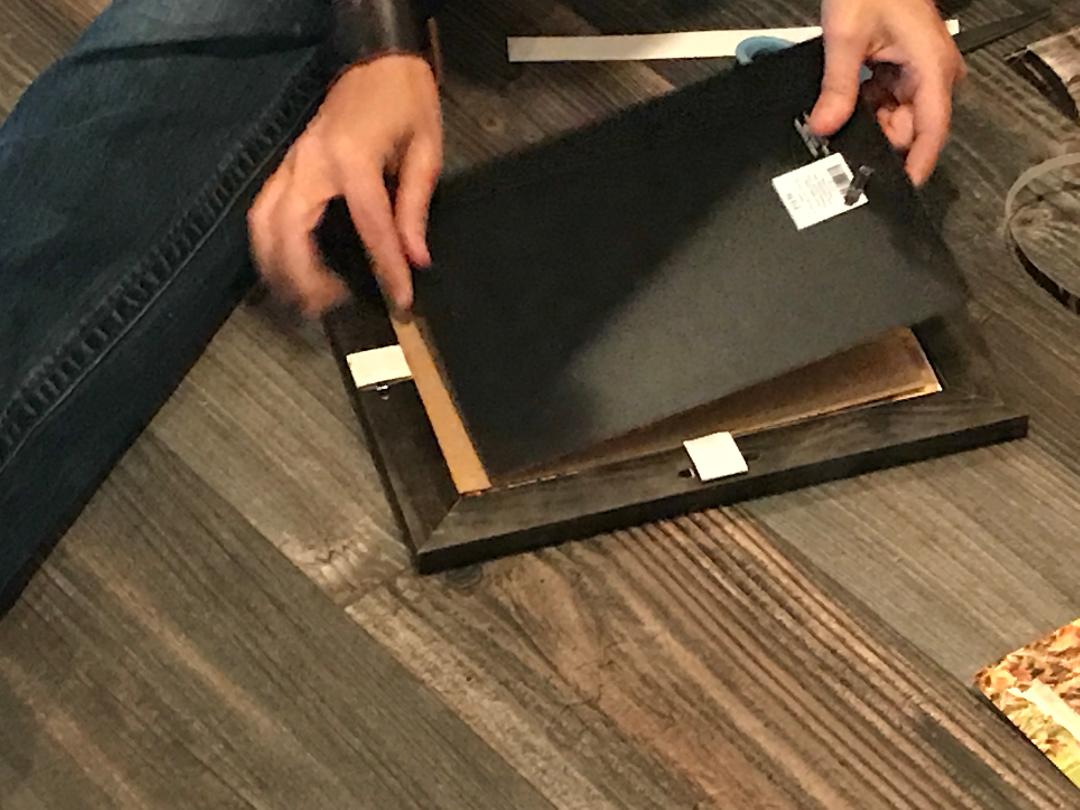




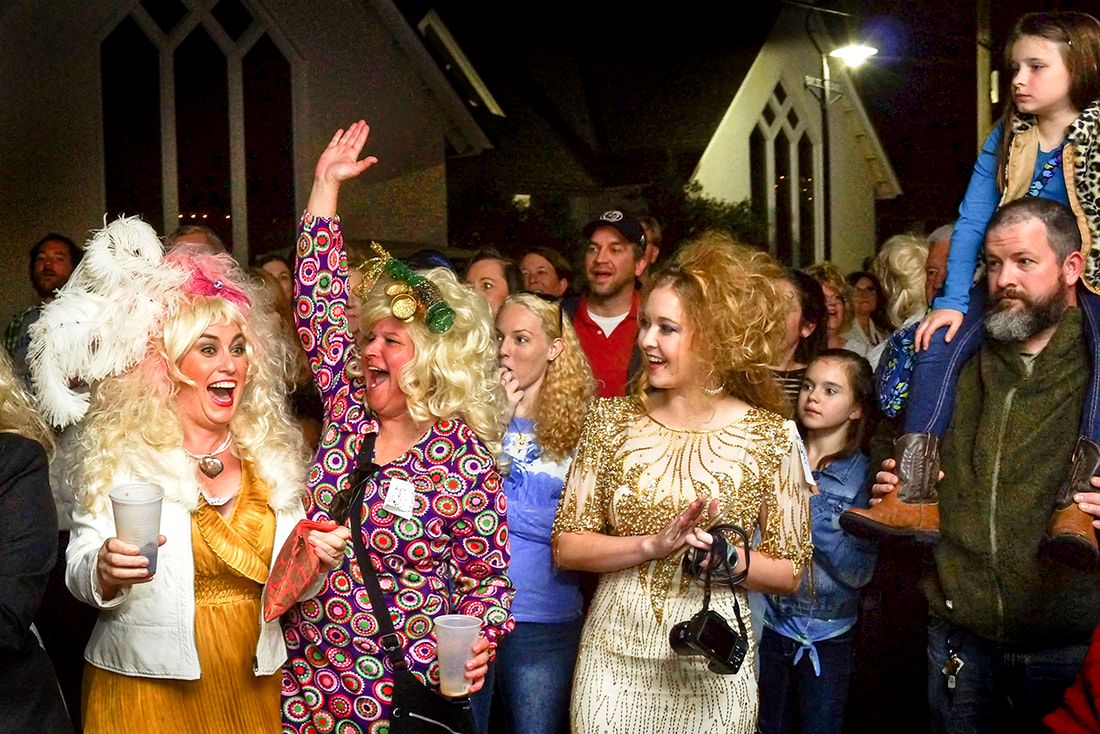




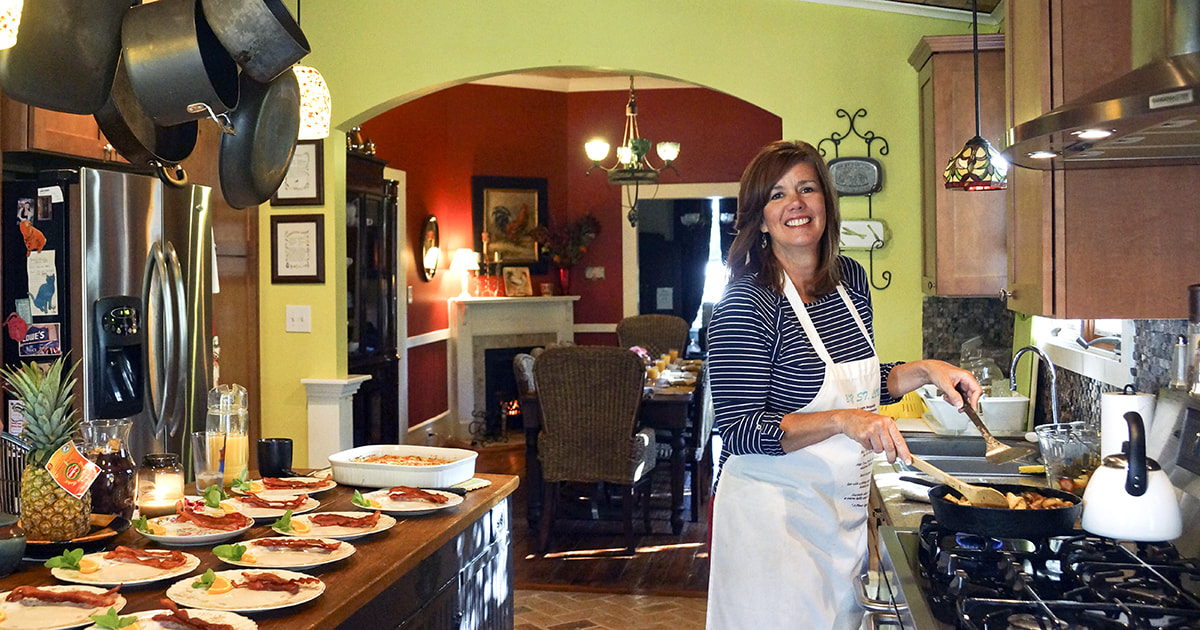






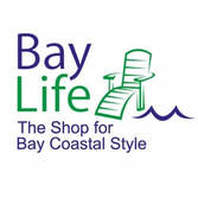






















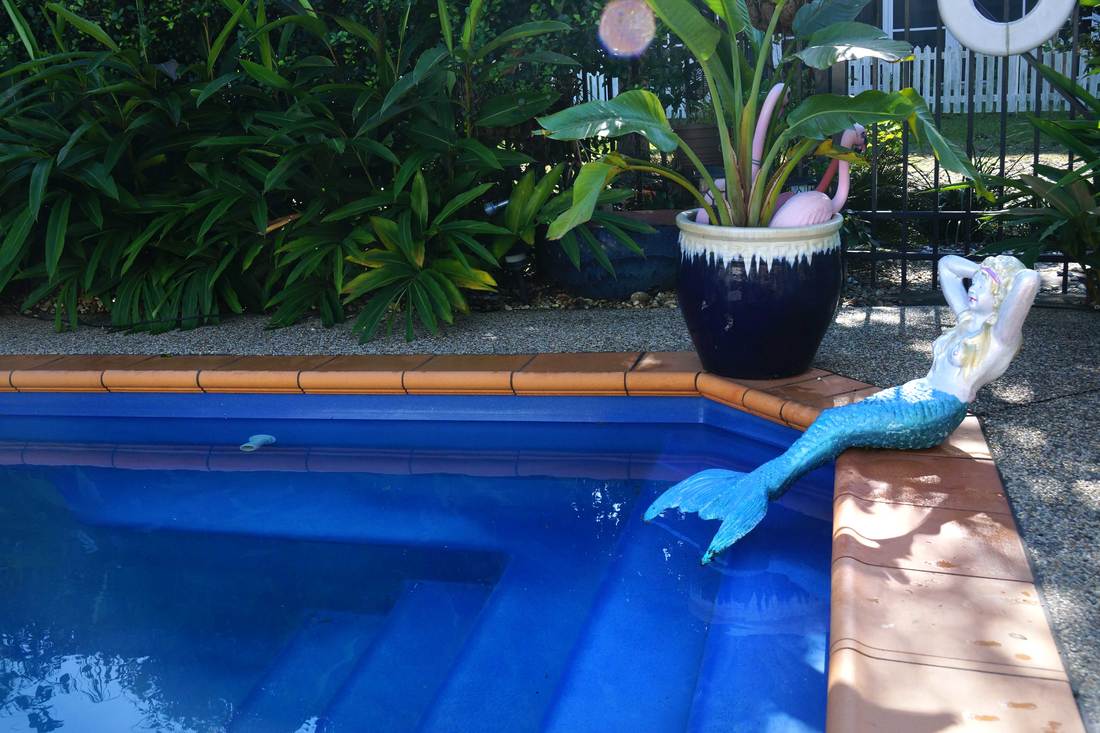








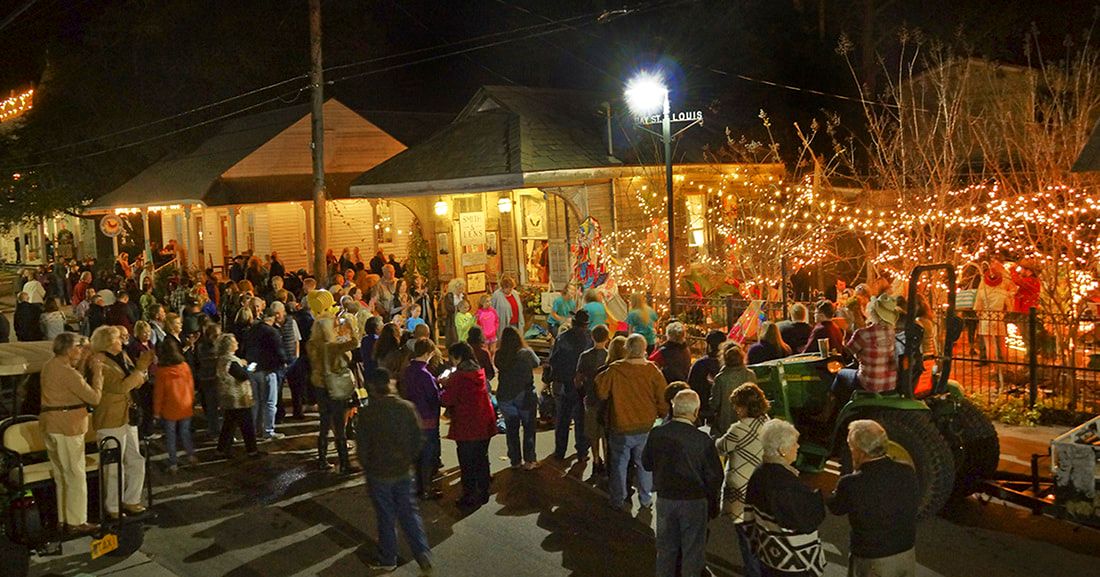





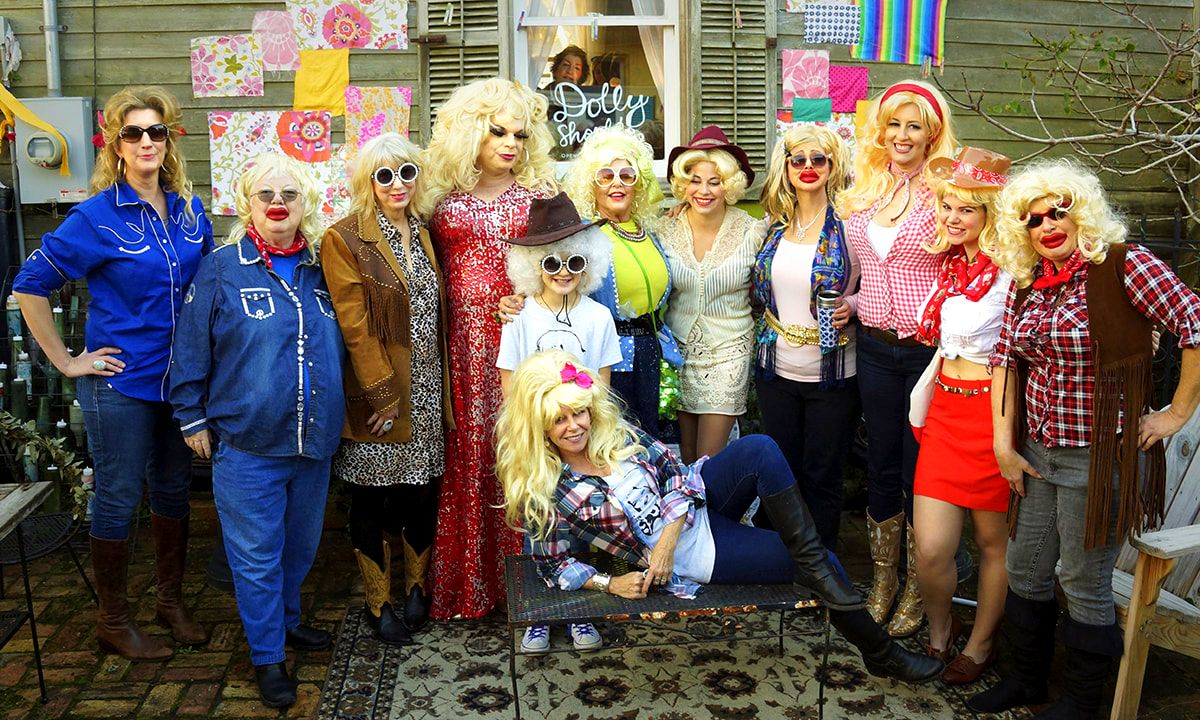





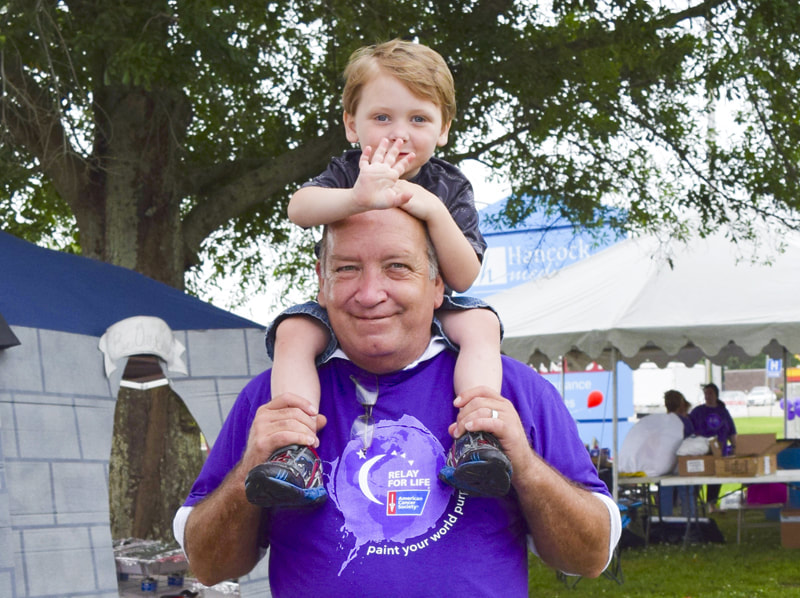





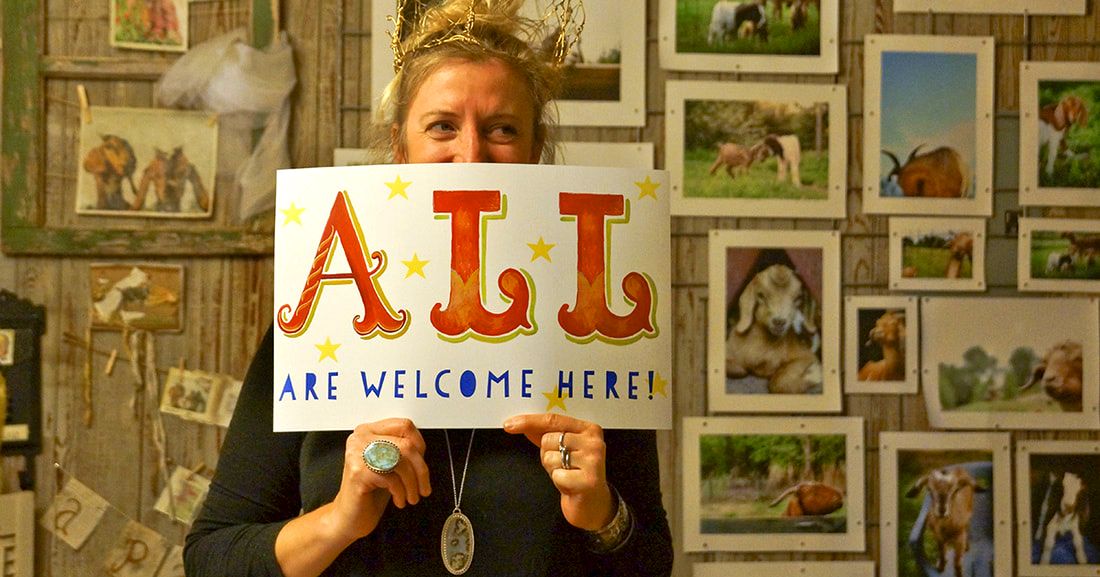



























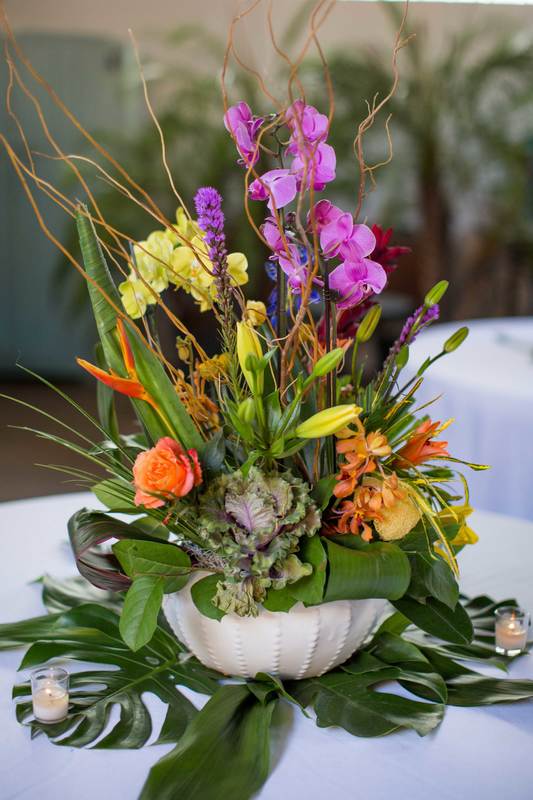










































 RSS Feed
RSS Feed























